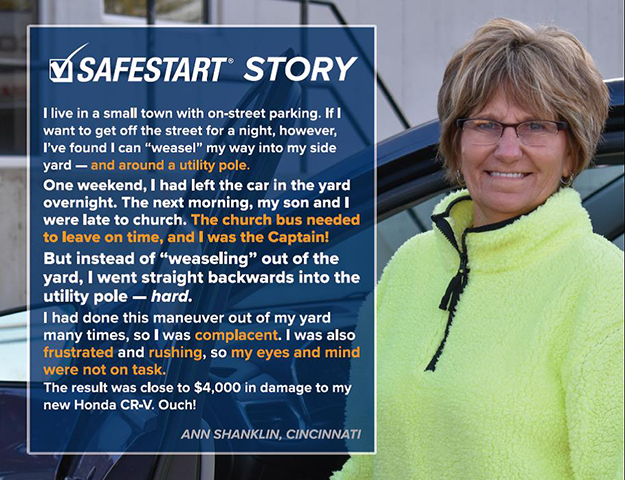Safety is more than just a single plan that is rolled out to achieve a simple result. A company’s primary end goal with safety is to keep its employees safe. But there’s a lot that goes into achieving that goal.
Ask any company that’s had success in safety how they got there and they’ll tell you that the language needs to be consistent at all levels. A safety calendar can be used as a form of open communication with employees to keep them engaged. Safety messages that have already been delivered in the workplace can be reinforced through the calendar and it can also provide messaging on areas of concern to ensure all employees are in the know—all delivered in one neat, concise format. This creates a culture where everyone is on the same page.
Employees want to feel like they’re a significant part of the company they work for—after all, an engaged employee is five times less likely to have a safety incident. The first sign of a disconnect between management and employees—like a message that says this is on a need-to-know basis (and you don’t need to know) is enough to take that engagement level to a point of disrepair without the hope of rebounding. Calendars provide the transparency that employees crave.
Calendars also help employees with their time management. What better way to organize and plan how best to divide your time between specific tasks than having everything displayed in one place?
Using the calendar
Encourage employees to work on new habits with a calendar of safety reminders, with regularly checking the calendar as the first habit. Season changes are a big component of injuries. Winter habits differ from those in the spring and summer, so keep season-specific issues in mind when putting your calendar together. There are other common times that complacency may force people to overlook risks like back-to-school or holiday safety. They may seem like common sense or you may feel like everyone already knows them, but a safety calendar is a great reminder to help employees stay safe when they’re not thinking about the risks. National safety observances are another great way to recognize things that are going on. They can serve as a natural transition to a training topic or toolbox talk and can help your employees feel like they’re in the know. Here are a few to get you started:
- Daylight saving time – there are significant increases in traffic accidents and fatal car crashes immediately following the time change, and the number of heart attacks increases on Mondays following daylight saving time. Additionally, people make more mistakes, become distracted, have trouble concentrating and their reaction times are slower right after the time change. It’s a good idea to implement a plan to help with fatigue at least a week before daylight saving time.
- Season changes – winter is a good example of a season change that brings many hazards. If you’re in an area that gets ice and snow, slippery conditions require new habits that will take some time getting used to, like testing your footing before getting out of your vehicle and shuffling your steps to get across the parking lot. Your driving habits also need to change in the winter and you’ll need extra time to prepare for travel before you depart.
- National Safety Month – June is National Safety Month. The NSC usually designates a topic to focus on each year and provides free resources for companies to use. The overall purpose is to focus on reducing the leading causes of injury and death. You can use their resources or develop your own based on the topic they provide—the abundance of material will create a familiarity with employees, piquing their curiosity to obtain more information.
Upcoming events
Naturally, a safety calendar is an ideal place to showcase all of your upcoming safety training initiatives. Safety training should be planned ahead of time and outlining it in the calendar is beneficial for all parties. Some training, like first-aid, will expire after a period of time, so it’s important to have the recertification scheduled before the certificate expiry.
You should also have a good idea of when your emergency evacuation drills will take place. Give your employees a head’s up in case they need to brush up on their responsibilities for the drill. Use the calendar to plan your upcoming safety meetings and toolbox talks. Topics can include seasonal changes, upcoming holiday hazards, and national awareness months (like distracted driving awareness) to dictate what you’ll cover in safety talks.
Another thing that should be documented in the calendar is preventive maintenance. All too often, only one person is responsible for scheduling and keeping track of preventive maintenance. This works well until that person is no longer around to carry out these tasks. By documenting this on the calendar, people will come to know things like HVAC maintenance occurs every April. It’s also a good heads-up in case they see temporary contract workers on-site.
Further to that point, it’s useful to note when outside people will be in the office, whether it’s a plant tour or higher-level management is in the office. That way, employees can prepare themselves ahead of time by wearing the right clothing, being ready for any meetings or interaction with the visitors, or parking in an alternate location if required.
Employee engagement
Contests are a great way to engage employees (and potentially their families, depending on what the contest is). Winning or even participating in a contest can make people feel like they matter to the company, and when people feel they matter, their contribution to the company increases. Since contests often focus on a theme, they can prompt participants to put some thought (and sometimes research) into gaining more knowledge on the selected theme, leading to some obvious safety benefits.

Cohen—a SafeStart client—did a great job of using their safety calendar to reinforce their SafeStart training. They held a contest asking employees across all of their plants to submit a safety slogan or story that’s inspired by the SafeStart four states. Twelve were chosen to be featured with their picture in the calendar (as seen here).

24/7 safety
Safety is often top of mind at work—there’s usually someone, like a supervisor or manager, to enforce the rules in the workplace. But you don’t have someone telling you how to be safe at home and you aren’t always thinking about safety when you’re off the job. Since most people rate their family’s safety higher than their own, companies that include their employees’ families in safety initiatives have a better engagement rate than those that only include employees. When it comes to safety calendars, it’s a good idea to incorporate some tips on how to keep an employees’ family safe. (Don’t forget to include their families in the safety contests!)
Here are a few great 24/7 safety tips to get you started:
- September is National Preparedness Month, so why not give tips for emergency evacuation at home.
- Recommend PPE while doing yard work (such as steel-toe boots and eye protection when cutting the grass).
- October is Fire Prevention Month, so be sure to include fire safety tips for family members at home.
- Shoveling/back injuries should be addressed with skills, time and support to develop new behaviors.
- Cold/heat stress are things you may think about on the job, but it’s important to know the dangers they present at home too.
Physical and digital
Now that cell phones are practically a permanent fixture in people’s hands, you may think that a printed safety calendar is unnecessary given the advanced calendar and alarm functions available on every device. But there are a host of reasons you should spend the time and money on a printed calendar and leverage both print digital features to round out the best features of both.
First, it signals to employees that you care and their safety is worth the effort. In fact, the quality of design, paper and level of detail you provide will directly correlate to the perceived value of the gift. Studies have shown that printed material also provides more of an emotional connection than an electronic equivalent and helps people engage with the content and remember it better too. If you held a contest and their child’s artwork was selected and used in the calendar, the printed copy could become a keepsake for them.
Next, by integrating mobile phone use into the printed calendar you can not only help employees see it as a more modern version of the age-old calendar but increase their use. In the hard copy of the calendar, point out strategies for using the alarms on their phone to remind them of important safety actions like a daily alert to do a circle check on their vehicle before they begin driving and get them to transfer key safety meetings from the calendar to their phone so they can get a reminder.
A supervisor’s guide
If you invest time in developing a robust calendar of safety-related dates, tips, and events then you’ll want to leverage that investment and put it to good use throughout the year. Ensure your supervisors all have a copy and suggest that they use the calendar regularly during safety meetings or toolbox talks to highlight and remind people of the items on the calendar for that week or month. They can discuss how it applies at work or at home, ask questions or do a related group activity.
Compliance is more than just holding employees to government standards. A good safety culture is one that recognizes employees as people. The company needs to show that they care about their employees and their employees’ families. Turn your safety calendar into a comprehensive communication tool to ensure your employees feel like they’re a part of the company plan going forward.

